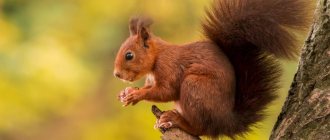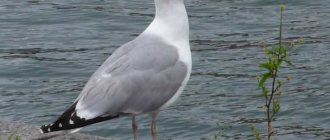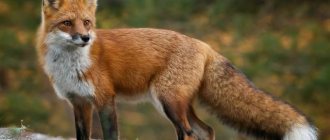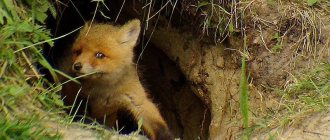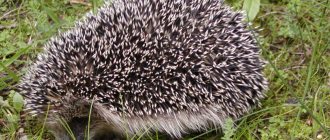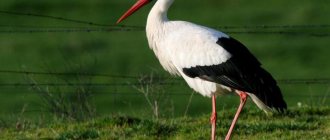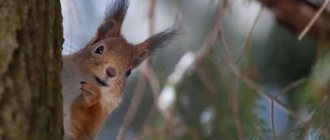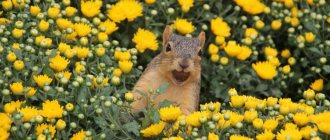- September 3, 2018
- Miscellaneous
- Oleg Petrov
Any hunter who is going to go hunting for them needs to have a good understanding of the types of hares. This is an animal of the mammalian class, which is not at all as harmless as many people think. In times of danger, it can show aggression and actively resist the attacker. For many centuries, hares have been extremely prized among hunters because of their warm fur and tasty meat.
Description of the animal
There are many types of hares, they all share common characteristics. The hare has a slender body, slightly compressed from the sides. Its length in some cases reaches 70 centimeters, and its weight can exceed 7 kg.
A distinctive feature of these animals is their long wedge-shaped ears, thanks to which their hearing is much better developed than their vision and sense of smell. The hare's hind legs are much better developed than its front legs; if its life is threatened, it can reach speeds of up to 80 km/h.
In addition, they have a unique ability to abruptly change the direction of running and move to the side, which helps them escape from foxes, wolves and owls. Hares run extremely well on slopes, and roll down head over heels.
What does a hare look like?
The white hare is a large mammal, reaching a length of 74 cm and a weight of up to 5 kg. Characteristic features are long ears and a short fluffy tail. The paws are wide, the hind legs are much longer than the front ones. Thanks to this, the hare runs fast and jumps very well.
But it’s easy for him to run up the hill, but difficult to go down - his long legs get in the way. And he has to roll head over heels down the mountain.
In terms of housing, hares are “eternal wanderers”, spending the night under any more or less convenient bush
In winter, the coat is thick, pure white, only the very tufts of the ears are colored black. They shed in spring and autumn; in summer, the color of the fur coat is camouflaged - the gray color has brownish-red tints.
The brown hare is very similar in appearance to the hare, only its body weight can reach 7 kg. Its ears and tail are much longer than those of its brother. The summer color is almost the same as that of the hare; in winter it only becomes a little lighter.
They also differ in their habitat. The hare prefers open spaces, and the hare likes forest thickets, although in the spring it feeds on the first grass also in meadows and fields.
Mountain hare (Lepus timidus)
Color
We will tell you about what types of hares there are in this article. Interestingly, everyone’s color changes depending on the time of year. When summer comes, hares are brown, reddish-gray or brown. The dark color of the undercoat appears uneven with small and large “speckles”. But the fur on the belly is white.
When winter comes, hares change their color. Their fur becomes lighter, but only hare whites become completely snow-white. Moreover, the tips of the ears of all representatives of this genus remain black all year round.
Males live no more than five years, but females live almost twice as long - an average of 9 years. It is known that hares lived to a maximum of 14 years.
Varieties of hares
There are many types of hares. One of the most famous and cutest is the hare. In addition, this is one of the most common types of hares. He lives throughout almost the entire territory of Russia, as well as in Northern Europe, South America, Mongolia and many other countries of the world.
The mountain hare species is distinguished by a special dimorphism, which manifests itself seasonally. In areas where snow falls annually in winter, its color becomes pure white. But in summer these hares are gray.
What species the hare you meet can be easily determined by its appearance. You just have to take a close look at the animal. Another popular breed is brown hares. These are one of the largest representatives of these animals; they grow up to 70 cm in length and weigh up to 7 kg.
The hare has silky and shiny fur with a characteristic waviness. They are predominantly brown in color, although shades may vary. The brown hare always has white rings around its eyes. They live in Iran, Turkey, the European forest-steppe, as well as in Kazakhstan and northern Africa.
The species of hares, a photo of which you will find in this article, is distinguished by disproportionately long and large ears. It is called an antelope. Their ears grow up to 20 centimeters in length. The ears are designed in a special way, which allows the animal to regulate heat exchange even at high temperatures. They live in several Mexican states and Arizona in the United States.
The Chinese hare is characterized by very small sizes - weight up to 2 kg and length no more than 45 cm. It is brown in color with hard and short fur. At the tips of his ears he has a characteristic black triangle pattern. These hares live in Vietnam, China and Taiwan.
Outwardly, it resembles a hare tolai, which lives in deserts and semi-deserts in the territories of Turkmenistan, Uzbekistan, Kazakhstan, Mongolia, China, as well as in our steppes - from the south of the Astrakhan region to the expanses of the Altai Territory. Unlike the hare, the tolai is a hare (the animal species described in this article) that has longer legs and ears. At the same time, there is absolutely no crimped fur.
The only breed of hare that lives in the coastal dunes of the Gulf of Tehuantepec in Mexico is called the yellowish. Large individuals reach 60 cm in length and weigh 4 kg. It is difficult to confuse them with any other hares because they have two characteristic black stripes on their bodies that run along the sides from the back of the head to the ears.
What types of hares live in Russia are described in detail in this article. In addition to those already mentioned, this is also the Manchurian hare. It can be found on shrub plains and deciduous forests in Primorye, the Far East, as well as in Korea and northeast China. It has short and stiff fur, brown color with special black ripples. These hares have very short hind legs, tail and ears, making them very similar to wild rabbits.
What can you tell your child about hares?
For preschoolers about hares
Valentina Nikolaevna Sotnikova is a teacher-speech therapist at the Children's Development Center - Kindergarten No. 33 "Rainbow" in the city of Gubkin, Belgorod region.
The material is recommended for parents of older preschoolers.
What can you tell your child about hares
? A hare is a wild animal. In spring and summer, the fur coat on hares is gray with reddish-brown markings. Among the thick grasses you won’t even notice Oblique. The hare's ears are long, and its tail is fluffy and short. The hind legs are longer than the front legs. During a jump, the hare throws forward first its hind legs, and then its front legs. Therefore, the hare easily runs up the hill, but it is much more difficult for him to go down. People call the hare Oblique, because its eyes are not in the center of its muzzle, but are located on the sides, and the animal can see what is happening from the side and even from behind.
Hares have sharp teeth, which they use to cut bark from trees like scissors. Hares do not make holes and do not collect food for the winter. During the day they sleep, hidden in the thicket of the forest: under the roots of a tree torn up by a storm or huddled in a hole under bushes. The hare hopes to hide from the winter cold in the thicket of the forest, burying itself in fluffy snow under a bush. In autumn, the hare changes its summer gray coat to a snow-white, warm and fluffy one. That's all the hare's preparation for winter. There is little food in the forest in winter, so the little hares get close to the stacks and feast on the hay. Sometimes they come to the gardens and gnaw cabbage stalks, and if there are trunks of young apple trees in the garden, then the hare can gnaw the bark from them. Often a hare gallops through the forest after an elk and picks up young shoots of aspens. Many enemies lie in wait for the hare in the forest: a wolf, a marten, a fox, a hawk, an eagle, an owl - all of them are not averse to eating delicious hare meat. Fleeing from a chase, Kosoy confuses his tracks, meanders, and makes huge leaps to the side in order to throw a fox, wolf, or hunting dogs off the scent. In the spring, the hare gives birth to fluffy, sighted bunnies. Vocabulary work: 1.- Describe the appearance of the hare. 2. - Name the hare family: hare - hare - little hares 3. - What is the name of the hare's house? - The hare has no home, he sleeps under the bushes, the roots of a tree torn up by a storm. 4. – What does a hare eat? - raids vegetable gardens and gnaws cabbage stalks, carrots, tree bark, and succulent forest plants. In winter, hares feast on collective farm hay and young tree shoots. 5. How does a hare prepare for winter? – The hare does not make any reserves for winter. In autumn he changes his gray fur coat to a white one. Activate the verbs in your child’s vocabulary: jumps, loops, entangles, rolls, gnaws. Explain the meaning of these words. Learn the riddles: 1) What kind of forest animal Stood up like a post Under a pine tree And stands among the grass - Ears larger than his head 2) Runs from the hill, pressing his ears 3) A white collar jumps straight across the field.
We recommend watching:
Poems for children 6-12 years old about animals How to tell a child about a squirrel Preschoolers about a fox Preschoolers 5-7 years old about a wolf
Similar articles:
About the mountain goat for children 6-8 years old
Crossword puzzle for schoolchildren on the topic of animals
Class hour in 2nd grade on the topic Nature
Habitat
This article, dedicated primarily to Russian animals, lists all possible types of hares for our country. The hare prefers to live in forest-steppes and steppes. Large populations can be found in desert-steppe areas, as well as on forest edges, meadows, fields, and in areas of deforestation.
Hares rarely go deep into the forest. They prefer areas where agriculture is developed; they feel very at ease and comfortable in ravines overgrown with bushes.
It is noteworthy that most breeds of hares are well adapted to life in harsh climatic conditions, even in the vastness of Alaska and the Arctic. You can't find hares only in Antarctica.
Hares do not have permanent roosting places; they often use the burrows of badgers and foxes, which they have abandoned. They are active at night and in the evenings.
Main types
There are only two widely known species - the hare and the hare, but they are not limited to them. Let's briefly talk about some types of hares.
Hare-cuff
A cross between a white hare and a hare, translated it means something like “illegitimate.” The word “cuff” usually refers to hybrids of animals of different species - wolves and dogs, hares or other animals.
It is believed that the cuff is born from a female hare and a male hare.
This birth was first proven in 1929, in one of the zoos in Russia - when animals in the same cage suddenly mated, and the hare gave birth to a hybrid hare.
It receives special characteristics from both parents equally, just as it can produce offspring from both.
Many believe that this species is fictitious, or very rare.
Tolai hare
Tolai is several times smaller than a hare. It lives mainly in Asian countries where there are deserts and mountains
, therefore its ears and paws are much longer than those of ordinary hares. Tolai does not like traveling and makes them only when absolutely necessary, for example, in search of food.
He does not dig holes himself; he prefers to occupy the abandoned homes of other animals - marmots, foxes or gophers. The color is thick gray, it does not change the color of its coat - and it is not capable of moving in the snow. That is why this species lives in steppe areas.
Arctic hare (Arctic hare)
The Arctic hare is very similar to the hare and was even considered a relative, but today it is considered to be a separate species. It lives in cold places on the planet, such as the tundra, Greenland, Canada.
It has thick fluffy fur and short ears, which allows it to better tolerate cold and accumulate heat.
Arctic hare are not shy and are almost not afraid of people, because they are very well camouflaged in the snow due to the color of their fur.
Brown hare
Rusak is a lover of freedom. He can be found near populated areas, as well as in fields, where he loves to run. Due to this, it looks much slimmer than other types.
You can distinguish a hare by his ears - they are very long, even longer than his head itself.
Its coat color is brown-gray, like a stone, and the coat itself is smooth and silky.
The hare has very good hearing and vision - he notices danger already at a distance of 300 or 400 meters.
You can meet the hare all over Russia. It is more active at night or at dusk, but in a calm environment it can be seen during the day.
White hare
The hare is more conservative and cautious. In winter, it digs holes in the snow and hides in them, feeding on dry grass and bark. It is distinguished by its light weight. Its paws are very short, and therefore it has difficulty moving in the snow.
The hare got its name for its color - in winter it is completely white and blends in with the snow, and by summer it molts and becomes gray, like a hare.
He also leads a nocturnal lifestyle and tries not to go far from his burrows, returning to them periodically. The hare also inhabits most of our country.
What does a hare eat?
Hares are herbivores and prefer to eat leaves and roots. In winter, when there is little vegetation, bark and dried leaves are used. And in the spring, due to a lack of minerals and food, they can eat soil or even stones.
In the summer, they eat various vegetables and fruits. However, despite this, several cases were recorded when hares ate the meat of birds - partridges, which fell into the traps of hunters.
They enjoy eating young grass, shrubs, dandelions and mushrooms. The brown hare is very fond of broom, rowan and oak bark. But the hare can climb into the garden and feast on cabbage or nibble on green onions and shrubs.
Where do hares live
For most species, the usual habitat is forest. There you can find enough food, hide from danger, and in winter you can bury yourself in the snow and wait out the bad weather.
The white hare can live in forest plantations, hide under fallen trees or in bushes. In summer it can live in dense forests, but in winter it prefers more advantageous places, such as clearings or undergrowth.
The hare can be found not far from one’s own home, in a garden or bush, because he is more humane.
Nutrition
Information about its feeding habits often helps you meet a hare. In summer and spring, hares most often eat shoots of bushes, young tree branches, leaves of various plants, as well as dandelion, clover and other herbs. They are not averse to eating melons and vegetables.
In winter, when the cold sets in, hares have to dig out the remains of agricultural crops from under the snow, and they also eat the bark of trees and shrubs, causing them serious harm.
At the same time, hares are by no means always herbivores. In the northern regions you can often find the heroes of our article feeding on partridges caught in hunting traps.
Under natural conditions, hares breed both in pairs and alone. They race three times during the year. A hare's gestation period is 50 days. In one litter, from one to nine small hares are born. They are born immediately sighted and able to move independently. In the first week of life, they need mother's milk, but after a couple of weeks they switch to independent feeding on grass food. By the coming spring they will reach sexual maturity.
Report about the hare
The message about the hare for children can be used in preparation for the lesson. A story about hares for children can be supplemented with interesting facts.
Report about hares
A hare is an animal that belongs to the class mammals, order lagomorphs. There are approximately 30 species of hares that are found throughout the world, with the exception of Antarctica. There are four species in our country: the white hare, the brown hare, the tolai and the Manchurian.
Description of the hare
Hares are small or medium-sized animals, body length is 12-74 cm, weight reaches 7 kg. The hind limbs of large species are elongated. Females are larger than males. The tail is short and almost invisible from the outside.
The fur of hares is quite thick, and the body color varies depending on the season. Hares molt 2-3 times a year. In summer, the hare can be gray, brown or black-brown, and in winter it lightens or becomes completely white.
A characteristic feature of lagomorphs are wedge-shaped ears, reaching a length of 9 to 15 cm. Thanks to the ears, the hare’s hearing is much better developed than the sense of smell and vision. The hind limbs of these mammals have long feet and are more developed than the forelimbs. When a threat arises, the hare's speed can reach 80 km/h. And the ability to suddenly change the direction of running and suddenly jump to the side allows these animals to get rid of the pursuit of enemies: wolves, foxes, owls, etc. Hares run well up slopes, but they have to go downhill head over heels.
How long do hares live?
The lifespan of males does not exceed 5 years, females - 9 years, however, there are recorded cases of a longer lifespan of a hare - about 12-14 years.
Under natural conditions, hares live both alone and in pairs. During the year, these animals rut three times. The gestation period for a hare lasts up to 50 days. One litter can have from 1 to 9 hares. The offspring are born sighted and capable of independent movement. In the first 5-7 days, rabbits need milk, but by 2-3 weeks of life they switch to grass food and become independent. Sexual maturity occurs by next spring.
What do hares eat?
The diet depends on the season. Hares eat legumes, underground mushrooms and herbs in the summer. In winter, food becomes bark and small branches of young trees - willow, hazel, aspen and birch. In the spring, hares begin to gather on lawns with young grass and are so carried away by the fresh food that they lose their usual caution. Hares do not have permanent burrows; they constantly change their roosting places. In winter, hare beds are located in thickets of bushes, dead wood and other hard-to-reach places. And in the fall, when there is frequent rain and water is constantly dripping from the trees, the long-eared ones settle in open clearings in the grass.
Hares are an object of developed fishing, especially in the northern regions. They produce fur skins, meat and hair for the felt industry.
We hope the information provided about the hare helped you. You can leave your report about the hare using the comment form.
Hare hunting
It doesn’t really matter what type of hare you hunt. The principle will be the same. The most common breed that can be found in domestic forests is the hare. If you know his habits well, you can successfully hunt him without a dog. The fact is that, escaping from being pursued by a hound, the hare runs away in large circles; it can take up to several hours to pursue it.
When hunting without a hound, the hunter, as a rule, manages to raise up to several hare at a time. At the same time, he himself receives a large portion of adrenaline, because the “explosion” of the hare from the grass, when he begins to move away almost from under his feet, really looks like a small explosion that can stupefy an inexperienced hunter.
At this moment, the main thing is self-control. Take control, aim accurately and shoot to interrupt the rapid flight of your prey.
Hunting with a self-propelled gun
Before the snow falls, hare hunting is called self-hunting. During these months, the hare lies as tightly as possible, so it is better to go hunting in the company of three or four of them.
From the outside it may seem that hunters are wandering through plowed land or stubble without any purpose, exploring tall weeds, or descending into ravines. In reality, they are trying to look out where the hare is most likely to be. Such hunting in the autumn is extremely exciting.
When the hunter stands directly on the scythe's bed, the hare is sure to blow himself up. To make it even easier to excite him, you should just walk at a leisurely pace and stop as often as possible. In this case, the hare may think that he has been noticed, he explodes and begins to run away.
Interestingly, hunting with a self-propelled gun has a universal feature. Having raised the very first hare, you need to very carefully explore the entire area in the area. Often it is possible to raise a few more birds nearby.
This method of hunting requires the hunter to have a thorough knowledge of the animal’s habits. For example, if it rained the previous night, then you should not look for the hares’ hiding places in the bushes or under the trees, since the drops falling from the branches greatly disturb him. It is better to go to a meadow or field.
In late autumn and early winter, brown hares often feed on winter crops. Walking along their edges, you can find hare nests.
Interesting Facts
There have always been many legends around the hare. One of them is a horned hare - does such an animal exist? This mythical animal appears in many cultures, acquiring either sharp predatory fangs or wings in addition to its horns. There is even a city in the USA that is declared the capital of horned hares. Souvenir licenses for shooting hares are sold there.
Why is the hare called oblique?
In Russian literature this name can often be heard and there is some truth in this. All this is due to its interesting structure of the eyes - they are located on the sides of the head. When a hare runs away from something, it looks sideways and can crash into a tree, and if it looks forward, its eyes converge at its nose, which is very similar to strabismus.
Is the hare a rodent or not?
Many people believe that the hare is a rodent because it constantly gnaws on something, but this is not so.
They are distinguished from rodents by the structure of the palate and the presence of two incisors. Previous
The world around us Famous migratory and wintering birds of Russia
Next
The world around usCrafts made from natural materials for elementary school
Trailing
When snow falls, they begin to search for the hare by tracking. It is worth noting that this is a very difficult task. It is important to wait for good weather until the snow stops overnight or the night before. In such conditions, the hare goes to feed, leaving long tracks in the snow, along which it is quite easy to find. If the snow ends only in the morning, then it is much more difficult to find the trail, because it becomes very short.
The hare understands perfectly well that the tracks in the snow give him away, so he tries in every possible way to confuse them. Therefore, if you have very little tracking experience, it is better to go on such a hunt together. In this case, one of the hunters sticks to the trail, and the second walks several tens of meters to the side, looking around.
The main rule when tracking is to devote no more than a third of your attention to the trail itself, and the rest to the surrounding area. In this case, it is better not to stop at all, in contrast to the method of hunting with a self-propelled gun.
Surge
Another type of hunting for this animal is drive. It is used when the hare gets out of their bed. In this case, the shooters, hiding, go forward, and at this time several beaters walk along the slope and drive the animal towards them. Please note that at this time you can also come across foxes in the ravine.
People go along the so-called white trail to hunt hare, emerging from hiding places. The ambush is set up in places where hares feed - these are haystacks, winter fields, vegetable gardens and orchards on the edge of the village. In this case, you should wear a camouflage suit over warm outerwear, and equip the ambush site with a support for your back, since you will have to sit in this position for up to several hours. Clear moonlit nights are considered ideal conditions for such hunting. In order not to get wounded, use devices for precise aiming, for example, a headlight or an under-barrel flashlight.

